
|
|
|
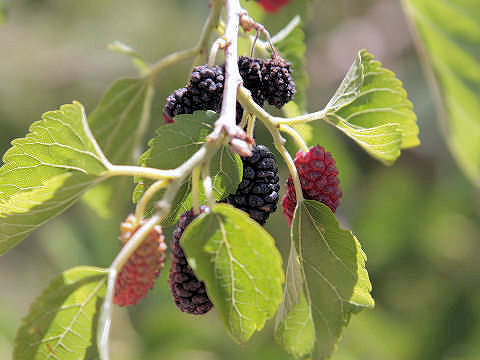 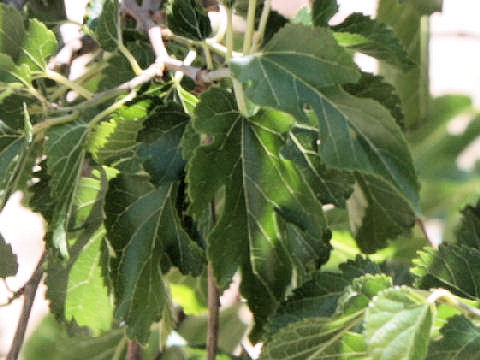 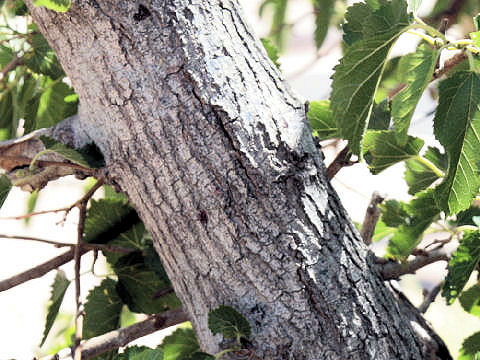 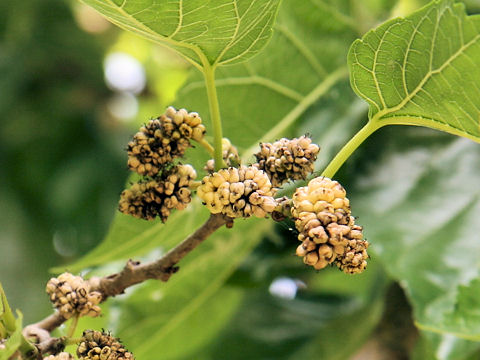 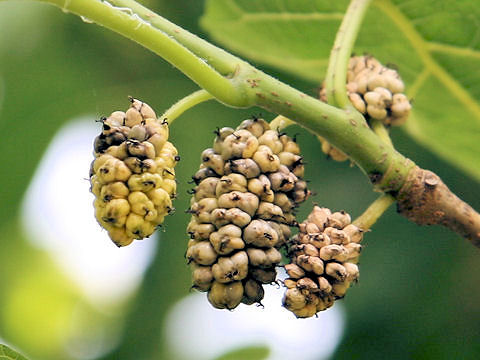 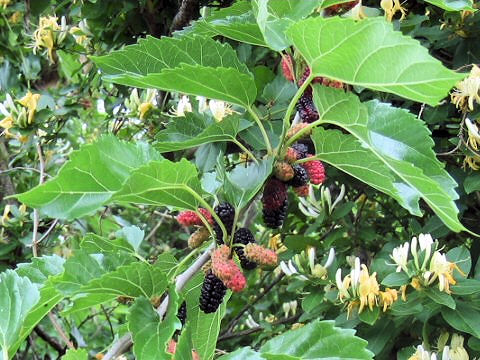 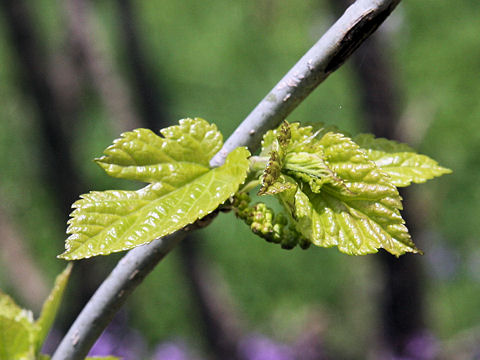 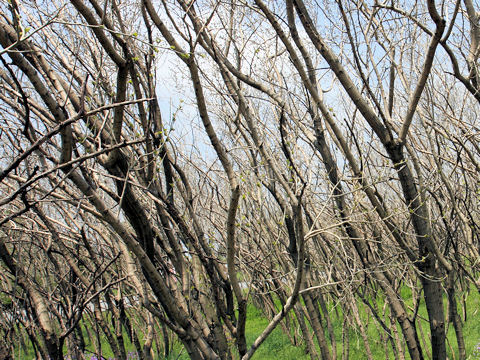 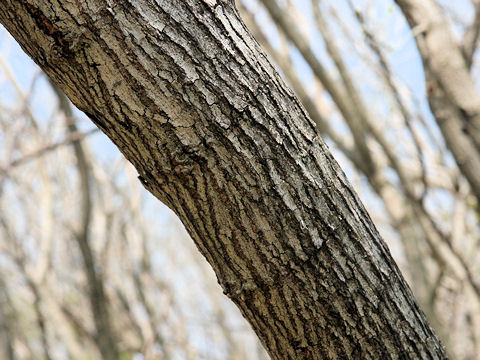 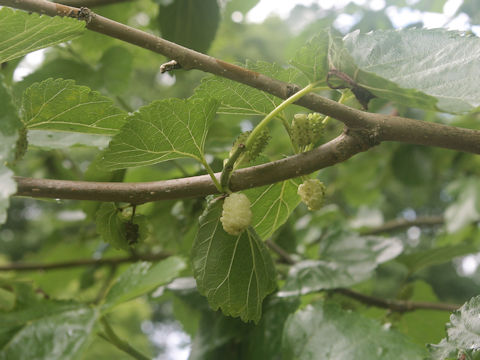 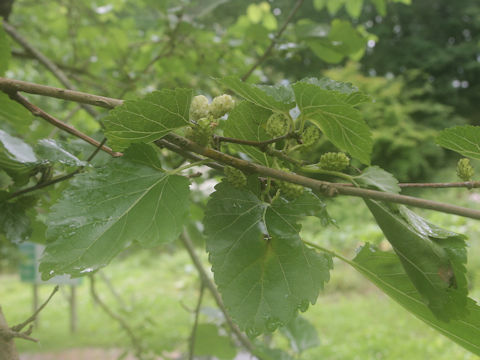 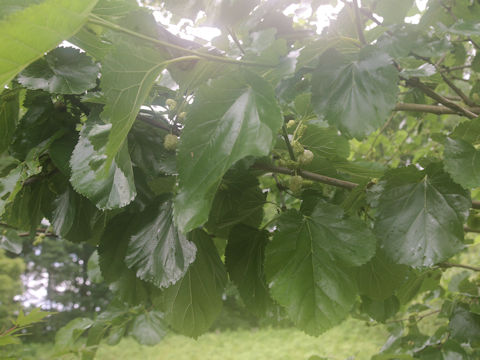 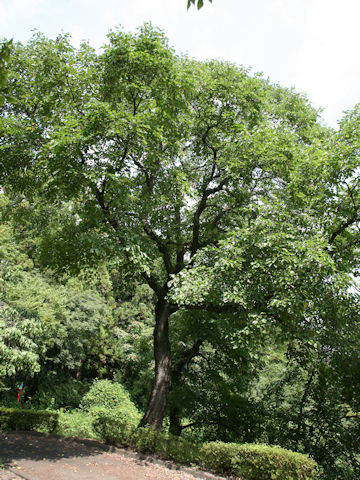 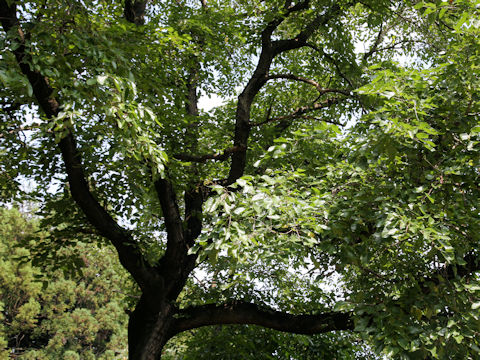 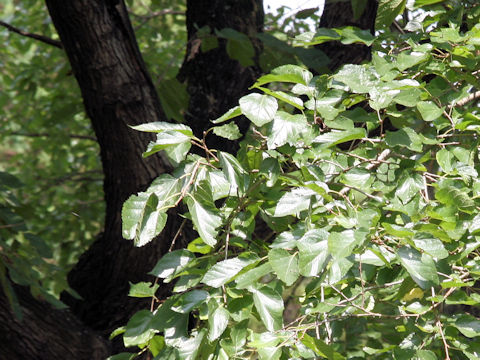 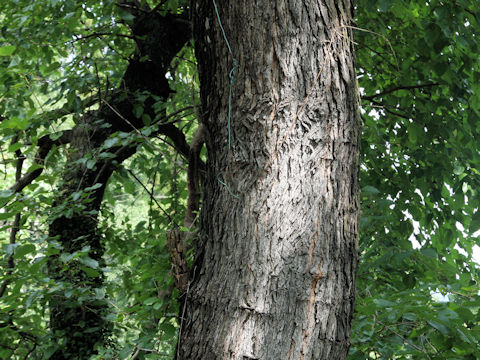 |
|
|
|
中国が原産です。わが国ではかつて養蚕のために広く栽培され、現在ではそれが野生化しています。またアメリカでも各地で植栽あるいは帰化しています。高さは6〜15メートルになり、樹皮は灰褐色で縦に割れ目が入ります。葉は卵形から広卵形で互生し、切れ込みのないものから3裂するものまで変化があります。「やまぐわ」に比べて、葉の先端があまり尾状に伸びません。4月から5月ごろ、葉腋に花序をだし、目立たない花を咲かせます。果実は集合果で、夏に黒紫色に熟します。花柱が「やまぐわ」に比べて短いのが特徴です。中国語では「桑(sang)」と呼ばれます。 |
|
|
クワ科クワ属の落葉高木で、学名は Morus alba。英名は White mulberry。 |
|
|
The White mulberry (Morus alba) belongs to Moraceae (the Mulberry family). It is a tall deciduous tree that is native to China. This tree was cultivated widely for growing of silkworms in Japan at one time, and naturalized nowadays. This tree is also planted and naturalized so many places of USA. It can reach 6-15 m in height, the barks are grayish-brown and furrowed longitudially. The leaves are ovate to broad-ovate, alternate and varied leaf-shape (entire margin to 3-lobed). The tip of leaf is not so caudal than "kuwa" (Morus bombycis). The inconspicuous flowers come in the axial clusters from April to May. The fruits are aggregate and ripen black-purple in summer. It is defined by the shorter styles than "kuwa". In Chinese, it is called "桑" (sang). |
|
|
[上・中1〜2] アメリカ・ニューメキシコ州サンタフェ市にて、2006年05月28日撮影。(photo by Jon Suehiro) [中3・中4] 大阪府交野市「大阪市大付属植物園」にて、2007年05月22日撮影。 [中5] 長野市松代温泉にて、2005年06月10日撮影。(photo by Yoko Kitagawa) [中6〜中8] 群馬県富士見村小暮にて、2008年04月27日撮影。 [中9〜中11] 秋田県仙北市田沢湖「ハートハーブ」にて、2022年06月26日撮影。 [中12〜14・下] 宮城県村田町「城山公園」にて、2024年08月20日撮影。 |

|
|
Shu Suehiro |